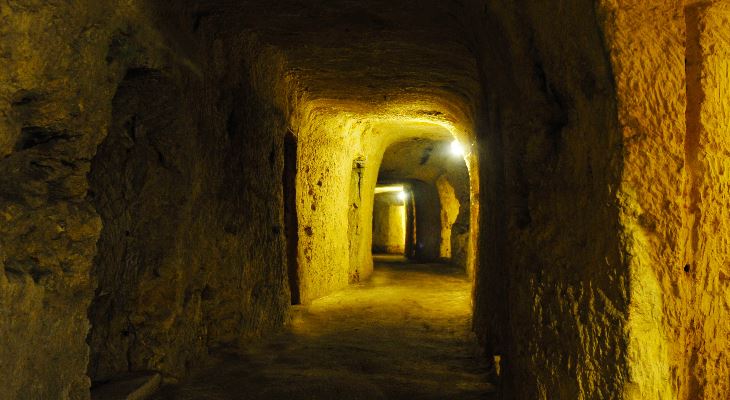A cave with healing properties? Discover the secrets of St Paul’s Grotto this feast day
St Paul’s Grotto is, geographically, Malta’s strongest link with St Paul since, according to tradition, St Paul, together with his missionary party, lived and preached in the Grotto throughout his three-month stay in Malta in 60AD, after his ship was wrecked along their journey to Rome.
Paul was being taken from Crete to Rome to be put to trial for being a political rebel, however, the ship carrying him and over 200 others was wrecked after it found itself in a strong storm close to the Maltese coast. Whilst tradition has it that the wreck was by St Paul’s Island, St Paul’s Grotto in Rabat is where the Apostle Paul took refuge and preached the word of God.
In order to visit the Grotto, one must go through the church of St Publius, the latter also playing a significant role during the visit of St Paul. When invited to visit the house of Publius, the Romans’ chief in Malta, St Paul is said to have cured Publius' father, who was suffering from a serious fever. Following this miraculous cure, it is said that Publius then converted to Christianity, consequently becoming the first Bishop of Malta.
Throughout the years, many important people have visited the grotto for its deep ties with early Christianity. In fact, in the past, people also used to believe that the stone within the grotto had healing properties, so believers would carve and grind rock from the cave to create medicine.
Inside the grotto is a statue of St Paul, which was donated by Grandmaster Pinto in 1748. The grotto has been visited by plenty of pilgrims in the past, as well as Admiral Lord Nelson, and both Pope John Paul II and Pope Benedict XVI.

© viewingmalta.com - Wignacourt Museum
In 1960, a silver ship donated by the Knights of St John can also visit air raid shelters from World War II, as well as the Wignacourt Museum.